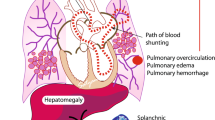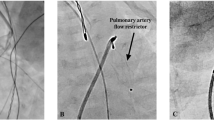Abstract
Anatomists since antiquity and pathologists since at least the 17th century had identified the ductus arteriosus (DA) in cadavers and postmortem examinations, respectively. However, healthcare providers for more than a century have struggled to understand the significance of a patent ductus arteriosus (PDA) in patients, debated whether to treat it or not and if so, when and how. Accepted answers depended upon the authoritative position of the person(s) offering recommendations, the cumulative contemporary medical knowledge, and the changing patient population characteristics. The treatment choices were most often based on one’s understanding of the balance between the risks and benefits of the chosen treatment. In the current era, with the increasing popularity of transcatheter occlusion of the PDA with relative ease even in extremely premature infants whose survival rates have improved dramatically, a basic question has reemerged—what are the benefits to treating the PDA in any preterm infant. In this brief review, I am providing a chronicle of the evolution of knowledge about the DA, the varying nature of the challenges a patent ductus posed for the caregivers, and the roots of the continued debate concerning the management of the enigmatic PDA.
This is a preview of subscription content, access via your institution
Access options
Subscribe to this journal
Receive 12 print issues and online access
$259.00 per year
only $21.58 per issue
Buy this article
- Purchase on Springer Link
- Instant access to full article PDF
Prices may be subject to local taxes which are calculated during checkout





Similar content being viewed by others
References
Sanker MN, Bhombal S, Benitz WE. PDA: to treat or not to treat. Congenit Heart Dis. 2019;14:461–51.
Benitz WE. Hey, doctor, leave the PDA alone. Pediatrics. 2017;140:e20170566.
Benitz WE, Bhombal S. The use of non-steroidal anti-inflammatory drugs for patent ductus arteriosus closure in preterm infants. Semin Fetal Neonatal Med. 2017;22:302–7.
Backes CH, Giesinger RE, Rivera BK, Berman DP, Smith CV, Chu CL, et al. Percutaneous closure of the patent ductus arteriosus in very low weight infants: considerations following US Food and Drug Administration approval of a novel device. J Pediatr. 2019. https://doi.org/10.1016/j.jpeds.2019.05.062.
Sathanandam S, Baldur K, Chilakala S, Washington K, Allen K, Knott-Craig C, et al. Rose of transcatheter patent ductus arteriosus closure in extremely low birth weight infants. Catheter Cardiovasc Interv. 2019;93:89–96.
Garrison FH. An introduction to the history of medicine with medical, chronology, suggestions for study and bibliographic data. Philadelphia: WB Saunders; 1929. p. 105–21.
Mettler CC. History of medicine. Philadelphia: The Blackiston Company; 1947.
Richardson RG. Chapter 9, first operations of the heart. In: The scalpel and the heart. New York: Charles Scribner’s Sons; 1970. p. 105–107.
Kaemmerer H, Meisner H, Hess J, Perloff JK. Surgical treatment of ductus arteriosus: a new historical perspective. Am J Cardiol. 2004;941:1153–4.
Fleming D. Galen on the motions of the blood in the heart and the lungs. ISIS. 1955;46:14–21.
Silverman WA. Retrolental fibroplasia. A modern parable. New York: Grune & Statton Inc.; 1980. p. 126–7.
Alexi-Meskishvili VV, BÖttcher W. The first closure of the persistent ductus arteriosus. Ann Thorac Surg. 2010;90:349–56.
Hirschfelder AD. Diseases of the heart and aorta. 3rd ed. Philadelphia: JP Lippincott; 1918. p. 557–726.
Baillie M. The morbid anatomy of some of the most important parts of the human body. 5th ed. Philadelphia: Hickman and Hazzard; 1820.
Ma I., TierneyLM. Name that murmur—eponyms for the astute auscultician. N Engl J Med. 2010;363:2164–8.
Gibson GA. Diseases of the heart and aorta. Edinburgh: Pentland; 1898. p. 566.
Tynan M. The murmur of the persistently patent arterial duct, or “The colonel is going to a dance”. Cardiol Young. 2003;13:559–62.
Burnard ED. A murmur that may arise from the DA in the human body. Proc R Soc Med. 1958;52:77–8.
Comroe JH. Exploring the heart: discoveries in heart disease and high blood pressure. New York: WW Norton; 1983. p. 192–94.
Murray L, Hendren W, Mayer JE, Rockoff MA. “A Thrill of Extreme Magnety”: Robert Gross and the beginning of cardiac surgery. J Pediatr Surg. 2013;48:1822–5.
Gross RE, Hubbard JP. Surgical ligation of a ductus arteriosus: report of first successful case. JAMA. 1939;112:729–31.
Replogle RL. Cardiac surgery in the age of dinosaurs. Perfusion. 2013;18:171–7.
Ellis H. Laurence O’Shaughnessy: outstanding thoracic surgeon, killed in the retreat to Dunkirk. Br J Hosp Med. 2015;76:301.
Orwell Today Website. http://www.orwelltoday.com/readerorwelloshaughnessy.shtml.
Dunn PM. Sir Joseph Barcroft of Cambridge (1872–1947) and prenatal research. Arch Dis Child Fetal Neonatal Ed. 2000;82:F75–F76.
Dawes GS. Physiological changes in the circulation after birth. In: Fishman AP, Richards DW, editors. Circulation of the blood: men and ideas. Oxford: Oxford University Press; 1964.
Longo LD. Sir Joseph Barcroft: one victorian physiologist’s contribution to a half century of discovery. J Physiol. 2016;594:1113–25.
Barcroft J. Researches on Pre-Natal Life, Vol. 1. Oxford: Blackwell Scientific; 1946.
Reese CN, Reese J. Reflections on the early years of neonatology. Paul R. Swyer: the beginnings of Canadian neonatology at The Hospital for Sick Children in Toronto and insights into his early career. J Perinatol. 2018;38:297–305.
Raju TNK, Growth of neonatal-perinatal medicine—a historical perspective. In: Martin RJ, Fanaroff AV, and Walsh MC, editors. Fanaroff & Martin’s neonatal-perinatal medicine. 11th ed. London: Elsevier; 2020. p. 2–17.
Thibeault DW, Emmanouilides GC, Nelson RJ, Laehman RS, Rosengart RM, Oh W. Patent ductus arteriosus complicating the respiratory distress syndrome in preterm infants. J Pediatr. 1975;86:120–6.
Powell ML. Patent ductus arteriosus in premature infants. Med J Aust. 1963;2:58–60.
Decancq HG. Repair of patent ductus arteriosus in a 1,417 gm infant.Am J Dis Child. 1963;106:112–20.
Levitsky SFisher E, Vidyasagar D, et al. Interruption of PDA DA in preterm infants with respiratory distress syndrome. Ann Thorac Surg. 1976;22:131–7.
Bhat R, Fisher E, Raju TNK, Vidyasagar D. Patent ductus arteriosus: recent advances in diagnosis and management. Pediatr Clin North Am. 1982;29:1117–36.
Raju TNK, Langenberg P. Pulmonary hemorrhage and exogenous surfactant therapy: a metanalysis. J Pediatr. 1993;123:603–10.
Clyman RI, Liebowitz M, Kaempf J, et al. PDA-TOLERATE trial: an exploraty randomized controlled clinical trial of treatment of moderate-to-large PDA at 1 week of age. J Pediatr. 2019;205:41–8.
Helenius K, Sjörs G, Shah PS, Modi N, Reichman B, et al. Survival in very preterm infants: an international comparison of 10 national neonatal networks. Pediatrics. 2017;140:e20171264.
Stankowski T, Aboul-Hassan SS, Marczak J, Szymanska A, Augustyn C, Cichon R. Minimally invasive thoracoscopic closure versus thoracotomy in children with patent ductus arteriosus. J Surg Res. 2017;208:1–9.
Mitchell CC, Rivera BK, Cooper JN, Smith CV, Berman DP, Slaughter JL, et al. Percutaneous closure of the ductus arteriosus: opportunities moving forward. Congenit Heart Dis. 2019;14:95–99.
Backes CH, Donavan JL, Slaughter JL. Catheter-based closure of the patent ductus arteriosus in preterm infants: considerations in the design of a randomized trial. J Perinatol. 2019.
Author information
Authors and Affiliations
Corresponding author
Ethics declarations
Conflict of interest
The authors declare that they have no conflict of interest.
Additional information
Publisher’s note Springer Nature remains neutral with regard to jurisdictional claims in published maps and institutional affiliations.
Rights and permissions
About this article
Cite this article
Raju, T.N.K. From Galen to Gross and beyond: a brief history of the enigmatic patent ductus arteriosus. J Perinatol 39, 1442–1448 (2019). https://doi.org/10.1038/s41372-019-0517-4
Received:
Accepted:
Published:
Issue Date:
DOI: https://doi.org/10.1038/s41372-019-0517-4
This article is cited by
-
The relationship between platelet indices and patent ductus arteriosus in preterm infants: a systematic review and meta-analysis
European Journal of Pediatrics (2021)
-
Contributions of Ibn Alnafis to the correct understanding of the circulation
Journal of Perinatology (2020)



